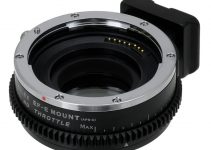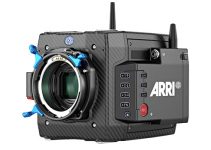The Sony FS5 is known in the filmmaking community for providing professional 4K footage at a cost that comes lower than other cameras with similar capabilities and even being more affordable than some DSLRs.
Meanwhile, paying for the RAW Output Upgrade License (CBKZ-FS5R) unlocks the full potential of the camera by allowing users to shoot in DCI-compliant 4K and 2K 12-bit RAW at much higher frame rates, making the device more versatile in most, if not all shooting scenarios.
While the Sony FS5 has received wide acclaim for balancing pro-level features with price, the video below shows an off-putting flaw of the camera that all videographers who particularly plan to shoot slow-motion footage with it should take into consideration.
Why we don’t film 200fps with the Sony PXW FS5 anymore from voodage on Vimeo.
The comparison puts the FS5 against the RED Epic with the Dragon sensor, and while the rig used in the video for the RED camera was not mentioned, it’s stated that the R3D files were filmed in REDcode 8:1 and REDgamma4 while the FS5 was recording both internally as well as externally to an Atomos Shogun Inferno Recorder. The team decided to use the Atomos’ recorder mainly due to the fact that the device is capable of converting the 4K 50p RAW signal into Apple ProRes 4:2:2 10 bit.
At first, the FS5 and the RED Dragon were pretty neck-in-neck when it came to image quality. Both produced natural skin tones and great detail in the image, although when it came to internal recording, the Dragon’s quality was far superior. The FS5, however, does show a drastic increase in the overall image quality when using the external recorder.
When it came down to comparing the 2K 200fps footage captured by the two cameras, however, a notable difference was spotted putting the FS5 in an odd position,to say the least. When looking closely at the footage of the Sony camera captured at 2K 200fps, contrasty areas reveal very distracting pink blocky artifacts. This unfavorable effect can be seen clearly in the shots of the backlit dancer, specifically in the areas near talent’s hair.
These artifacts are an unfortunate reality that FS5 users will have to be vigilant over when shooting at this specific recording setting. The good news, though, is that no other recording options seem to be affected by the same pixel artifacts rather than shooting in 2K at 200fps.
To process the footage, the selected recording formats (2K@200fps as well as 4K@100fps) were color graded in Davinci Resolve 14. Afterward, the clips were cut in Adobe Premiere CC and exported in 1080p25 and 2160p25 for uploading to Vimeo and YouTube respectively.
[source: voodage]
Order Links:
Sony PXW-FS5 XDCAM Super 35 Camera System (B&H, Amazon)
Sony PXW-FS5 FS RAW Output Upgrade License (B&H, Amazon)
Disclaimer: As an Amazon Associate partner and participant in B&H and other affiliate programmes, we earn a small comission from each purchase made through the affiliate links listed above at no additional cost to you.





Everyone Knows the limitaiton of the FS5 @ 2k Its pixel bidind happening… at 4k 60/120) that does not happen even at 200fps FHD. Please next time do your research about the problem at 2k footing with FS5…
That pink is nasty indeed as you can see when you enlarge the footage. On the other hand, at 01:06, didn’t you guys see the amount of noise on the RED? I think it’s a least as bad as the artefacts of the FS5… And what about sharpness? Difficult to compare as the focal length is different, but the FS5 definitely looks sharper as well…
Just use centerscan if you care that much about aliasing…
Nobody see the noise in the 200 fps red footage?
it looks worse than the sony
¨Why we don’t film 200fps with the Sony PXW FS5 anymore ¨…..really?? for some purple fringe/pixel biding that you could fix in post?? And what about the RED noise?? not that easy to fix in post.
Its the 8×8 wavelet compression also FS700 and FS7 use this algorithm to get 4K60 or 2K240 trough the 3G SDI port (6,3G would be needed for uncompressed) and you really notice these artifacts on contrasty areas. 2K 200fps noise on RED is visible since its not ETTR and its not the idea of the camera to read its pixel 1:1.
The better question is will anyone notice when its NOT zoomed in 300% or if you’re NOT pointing it out on a shot lasting a few seconds? Besides, its fairly easy to fix. The best looking models might not look as good when you take a magnifying glass to their thighs or butt, but when you look at them as a whole, pretty amazing. Pixel peeping is not exactly the REAL world. Monet paintings look pretty crappy up close too=)
Same issue with FS7 and FS7mkII when shooting in slowmo (150fps, PAL) with internal rec.